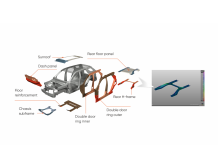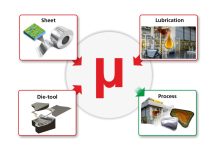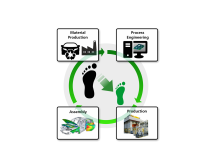Best AHSS Series Review and Stamping Feasibility of the Protagonist’s Characteristic Armor
Last year, we reviewed the movie 8 Mile for our article on the “Top Sheet Metal Stamping Movies”. The film industry rarely presents sheet metal forming in a glamorous light. In this post, we detail the prominent role given to AHSS material in the Star Wars universe, and believe it or not – it’s sexy! Then we demonstrate the feasibility of stamping an actual set of the Mandalorian’s suit of armor (from sheet metal) which greatly excited the galaxy of Star Wars fans when it made its appearance on screen.
The Mandalorian Story in a Galaxy Far, Far Away…
Unless you’ve been self-isolating on a distant moon, you know The Mandalorian is the biggest original TV series currently on the Disney+ launch roster. The series took the internet by storm last year, thanks to the central duo of Pedro Pascal’s titular bounty hunter and the adorable Grogu, aka Baby Yoda. Even if you aren’t a hardcore Star Wars fan, the story of a heavily armed mercenary suddenly becoming a father figure to protect the mysterious and force-sensitive child is admittedly charming.
The Guardian reviewed The Mandalorian as “Cool. The monsters are cool, the spaceships are cool, the robots are cool. The landscapes: whoa. The interspecies bar fights: crackin.”
Costing fifteen million US dollars per episode The Mandalorian story takes place five years after the original Return of the Jedi and before JJ Abram’s sequel, The Force Awakens. Therefore, the series plays out in a tense, lawless universe.
For those unfamiliar, here is Disney’s 1:30 min first season recap video:
The Mandalorian (“Mando”) has one job to do as a down on his luck bounty hunter. Good at what he does but low on credits, he takes the highest paying job available. The Bounty Hunter’s Guild will pay him top credits to track down an escapee, referred to only as “the Asset”.
The Client is willing to pay in beskar, the highly durable metal Mandalorians use to create their legendary armor. Through the course of his assignment, Mando forms a bond with the Asset (Baby Yoda), recalling the loss of his own parents too vividly to consign another to orphanhood.
Technically, Mando does his job, turning the child over to the ominous Client (who turns out to be a remainder of Darth Vader’s Galactic Empire). However, when he learns his Client intends to do some kind of experiments on the child, Mando is reluctant to hand his charge over. All the same, he accepts the payment in solid ingots of beskar steel (Star Wars AHSS). But after ruminating on the fate of the child, Mando decides to steal him back – only to discover that according to Mandalorian Creed (their warrior code), he must return the child to its own kind. Thus, the duo’s adventures begin.
Now, what does any of this have to do with sheet metal forming?
Suiting Up in a Beautiful Set of Armor
When Mando receives the payment for his bounty in the form of beskar steel ingots, it’s a big deal in Mandalorian warrior culture. As Star Wars legend goes, beskar is the toughest super-powered metal in the galaxy. The Mandalorians have used it for thousands of years to create their armor. It can stop blaster shots and is the only known material that can withstand lightsaber strikes (yikes!), giving the Mandalorians a fighting advantage as longstanding enemies of the Jedi.
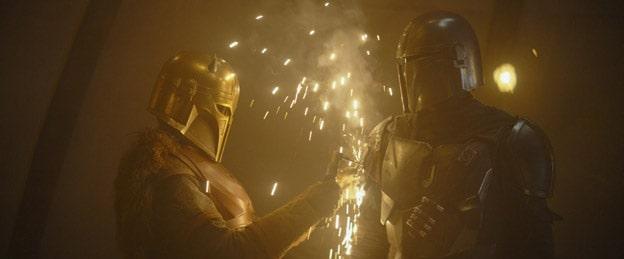
Fig. 1: Emily Swallow (left) as the Mandalorian armorer.
For that reason, the Mandalorian clan’s skilled blacksmith and armorer (played by Emily Swallow) professes that the bounty payment is an honorable return of the beskar lost during the Great Purge. This was a period of turmoil during which the Galactic Empire sought to wipe out the Mandalorian people, recognizing their warrior culture as the next greatest threat to the Empire, following the Jedi.
So important is the material, the Mandalorians closely guard the secret of its forming. And in the Star Wars universe, solid beskar ingots is a currency exceeding the value of gold. As a result, Ultra High Strength Steel plays a significant role in the Mandalorian series.
Disney grants us access to the secret art of forging beskar steel, watching over the shoulder of the armorer to reveal the crafted Mandalorian armor in a captivating scene.
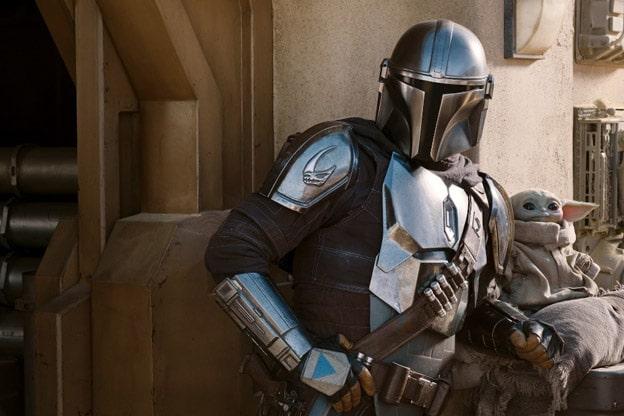
Fig. 2: The wearing of armor is one of the Resol’nare, the six tenets that define Mandalorian culture.
When fans finally got to feast their eyes on Mando’s completed set of armor, the internet went wild. YouTube fans quickly responded with thousands of videos like “How Much is Beskar Worth?”, discussing its monetary value in the Star Wars Universe. Wanting a piece of the currency for themselves, hundreds of videos cropped up describing “How to Make Beskar Steel Ingots”. Several YouTube videos detail a DIY-weathering process to give your replica beskar ingots the characteristic patterns of molting, seen on Damascus steel, the patterns of which are reminiscent of flowing water. The replica ingots even feature the imperial stamp to show they were confiscated during the Great Purge. Some fans have also crafted 3D printed beskar steel phone cases.
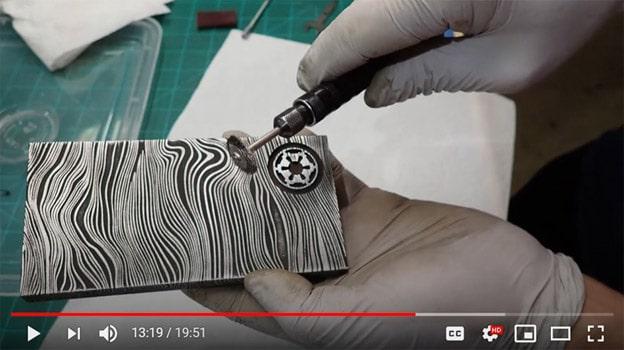
Fig. 3: One fan working on a DIY beskar ingot
Many fans have also gotten to work creating their own set of Mandalorian armor for cosplay purposes. We contacted Galactic Armory Store after admiring his 3D printed set of armor. The store-owner offers 3D ready files for those who have a 3D printer at home and video tutorials for users to follow along.
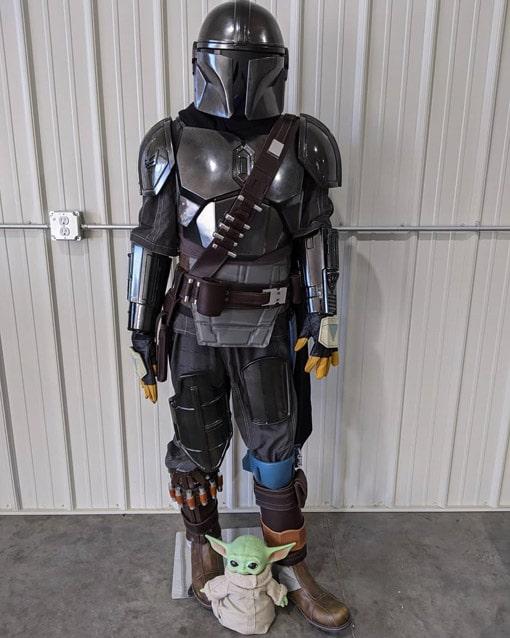
Fig. 4: Full 3D printed armor set from Galactic Armory
A Forming Study of the Mandalorian Armor
With such high interest in the armor itself, we decided to do a feasibility study to investigate its formability. We particularly wanted to determine whether the helmet could be reasonably made due to its distinctive shape. Aaron from the Galactic Armory Store granted permission to use his 3D geometries and AutoForm Technical Director Dr. Bart Carleer reports below on the stamping study.

Fig. 5: The raw 3D geometry was split into half sections
“Firstly, I had to carry out some data preparation due to the deep shapes of the helmet. Looking at the geometry, I decided to cut the helmet into left and right segments, which could later be assembled. For the stamping procedure, I positioned the two pieces symmetrically so the bottom opening of the helmet halves would face each other. This way, two half shells would be drawn in one hit.

Fig. 6: AutoForm analysis
“Before doing a stamping analysis, the above shows the full early feasibility analysis, determining the locations of the part’s risk areas. Our software created a simple draw die surface and the result from AutoForm-StampingAdviser (bottom left of Figure 6) reveals some red coloring around the ear section of the helmet – demonstrating that certain sharp edges and undercuts featured in the original one-piece design cannot be drawn without any splits. Therefore, I made some geometry modifications in the ear region, shown on the right-hand side of the image. Essentially, I smoothed out some of the radii and eliminated the undercuts in order to make the part feasible for a stamping operation.
“I then performed another feasibility analysis, which showed a significant improvement in this ear region of the helmet. There were some small warning spots remaining, however, which are typically overcome during the next stamping simulation. Actually, in the original helmet from the TV series, these earpieces would not need to be simulated because they are supposed to be separate attachments. However, we wanted a challenging part that could be stamped in a single finished piece.
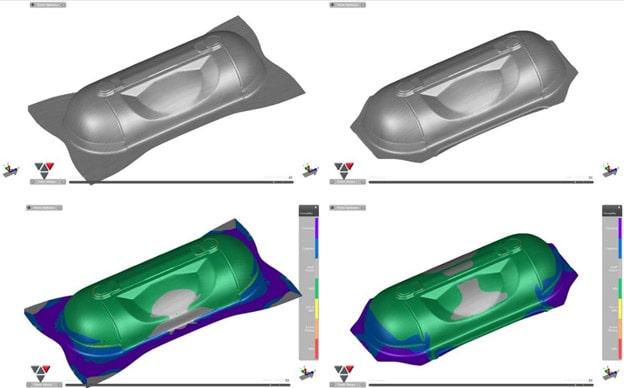
Fig. 7: Full stamping analysis achieving an ideal stretch
“Next, I ran a full stamping analysis by first inserting a rectangular blank using preliminary parameter settings. Those results are shown in Figure 7 (top left), where you can see the use of a large rectangular blank. Below that is the formability result, which is nicely stretched out, as indicated by the green area. You can also see several orange and yellow spots, close to the blue area at the very top of the helmet. This reflects a critical situation, indicating a risk of splits right next to a compression area – this always spells bad news for achieving a reliable stamping process.
“The two images on the right of Figure 7 (above and below) show the results of some process optimization. In order to better control the material, I added some drawbeads on the long side and the top of the helmet. Furthermore, I cut away the edges of the blank, an often-used methodology for overcoming material locking. A much improved material flow was achieved going into the helmet. You can clearly see that the risk of splits has been overcome. To compromise for the stretching, I had to do a bit of a balancing act. You can see that there are some compression stretches in the helmet itself, but it’s under control and it’s repeatable, yielding a stable process capable of serially stamping the helmet.
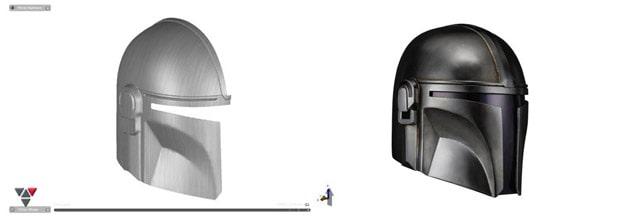
Fig. 8: AutoForm result compared with a fiberglass replica helmet
“This is the final result of the part after the stamping operation. The trimming operations separate the part out of the scrap material to produce the two halves, giving the final geometry of the helmet, which can then be welded. The higher quality replicas are made of fiberglass, but for this stamping simulation, I selected a steel material from the AutoForm material database. Although we haven’t actually stamped this part, for the sake of completion, you would want to spray the final helmet with a clear coating in order to maintain the polished and shiny metal appearance.”
Thank you, Bart, for completing this riveting study. The Mandalorian is our top pick for the “Best TV Series of AHSS Forming”. Largely considered a sci-fi, I believe one of its greatest achievements is captivatingly drawing us into the dramatic atmosphere of good old Western, Clint Eastwood gunslinger-type action. You never know who will pull the trigger first.
This is the way.
Image credits Disney Media & Entertainment Distribution



